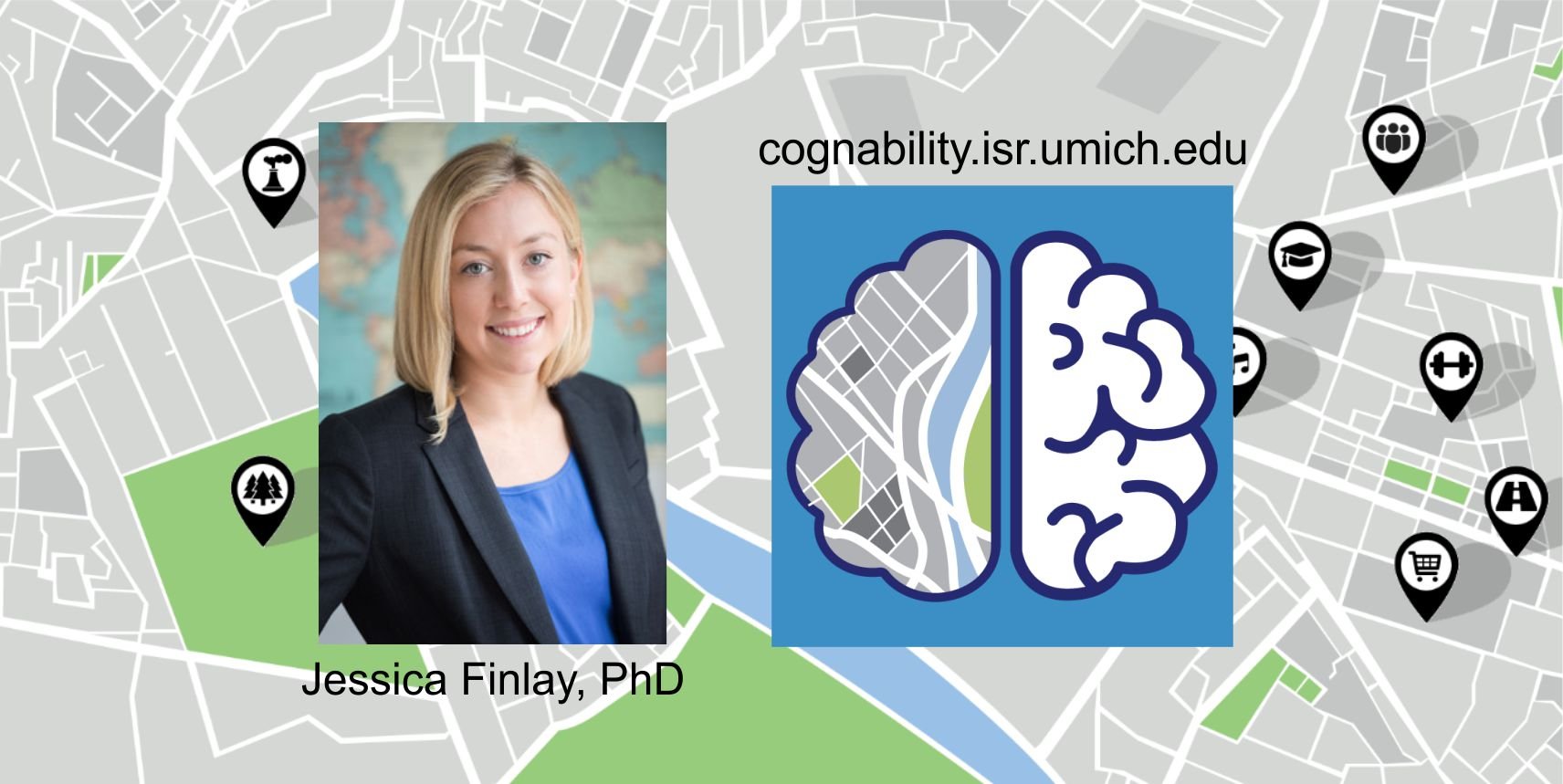Jessica Finlay’s Research Links Neighborhoods and Brain Health Through ‘Cognability’
Volunteering in community programs with older adults in North Minneapolis, studying geography and gerontology, and experiencing the devastating effects of dementia in her own family drove Jessica Finlay, PhD toward novel public health research on environmental factors affecting dementia risk.

Families everywhere experience the impacts of dementia, which is a loss of cognitive functioning (such as thinking, remembering, and reasoning) that becomes severe enough to interfere with daily life. Alzheimer’s is the most common form of dementia, slowly destroying memory and the mind as the brain shrinks and brain cells die. More than six million Americans 65 and over may have Alzheimer’s, and there is currently no cure.
“During interviews, some of the greatest relatable fears that older adults shared with me included losing yourself and your independence at home, needing costly care, or becoming a burden on family and friends,” explains Finlay. “Hearing their stories inspired me to pursue research on neighborhood contexts of Alzheimer’s disease and related dementias.”
Fascinated by the entanglement of people and place (built, social, and natural environments) while becoming increasingly curious about how where we live might affect wellbeing, Finlay began investigating how neighborhoods are linked to cognitive health. She wondered about living close to parks, recreation centers, libraries, museums, cafes, arts and cultural sites, civic and social groups, fast-food, highways, polluting sites – the places many of us experience on a daily basis. If these places meaningfully impact opportunities for cognitively-healthy behaviors such as physical activity and socialization, might neighborhoods be linked to dementia risk? And, could disparities across neighborhoods contribute to later-life health disparities among underserved populations?
Since joining U-M, Finlay has pursued these pressing questions. Her lead-authored paper in Social Science & Medicine introduced the new concept of “Cognability,” which refers to how supportive a geographic area is to cognitive health among aging residents. Given her passion for knowledge translation to public audiences, advocacy and policymaking, Finlay led the design and launch of the Cognability website, through the U-M Institute for Social Research. Finlay even came up with the idea for the logo with a brain and map while she was on a run. Visitors simply type in an address and the site displays the level of Cognability as a percentile score (“CogScore”) and as colors on an interactive map.
MICHR supported Finlay’s research when she was one of our Postdoctoral Translational Scholars Program (PTSP) scholars by connecting her with mentors, helping her with two successful NIH grant submissions, providing advanced training in translational science, and supporting her in the formation of a community advisory board to help create the Cognability website. “Everyone was nice and supportive, and I would have to say that MICHR has been fundamental to my success,” said Finlay.
Now living in Colorado with her family, Finlay loves running; skiing; visiting the library, pool, and parks with her children; and just being active. She will soon be an Assistant Professor in the Department of Geography and the Institute of Behavioral Science at the University of Colorado Boulder.
Her family is highly supportive of her career. She even co-authored a book with her microbiologist father Dr. Brett Finlay, The Whole-Body Microbiome, which examines harnessing the microbes in and around us to enhance health and longevity.
Moving forward in her research, Finlay wants to look further “upstream” at how these environmental and social factors affect younger people; and investigate how we can design and plan neighborhoods that better provide opportunities for all ages to be healthier cognitively, by encouraging physical activity, social connection, and cognitive stimulation, i.e. creative and complex activities like music, games, and wayfinding.
“I see aging as a lifelong process that begins the day you’re born. So my work is going to start moving earlier – ideally finding studies that follow folks for a really long time to see how neighborhood factors change as you go through various life stages. So much of your cognitive health is already set by the time you are 65, so thinking about how neighborhoods can support health across the lifespan is key.”
“I hope to inform real community-level change,” Finlay continues. “This can be as large-scale infrastructure changes like investing in new multigenerational recreational and cultural arts centers, or creative urban planning for pedestrian infrastructure to enable easy and safe mobility whether you’re walking independently or with a walker, wheelchair, or stroller. Smaller-scale changes are also meaningful, such as painting buildings with different colored doors for wayfinding, shading benches along a path, and making sure sidewalks are plowed. There is a lot more to do to make communities accessible and healthful to support folks across their entire life course.”
As far as advice for early career researchers, Finlay wants them to be genuinely passionate about the path they’ve chosen, not just following a skill set. “Having those compelling questions that drive you to find answers is where really groundbreaking science comes from. And don’t be afraid to get inspiration from unexpected sources and connections.”
First finding inspiration volunteering with older adults in the neighborhoods of North Minneapolis, Finlay’s work now straddles many different domains from geography to gerontology, public health, urban planning, and sociology. “I really love not being in just one narrow niche.”